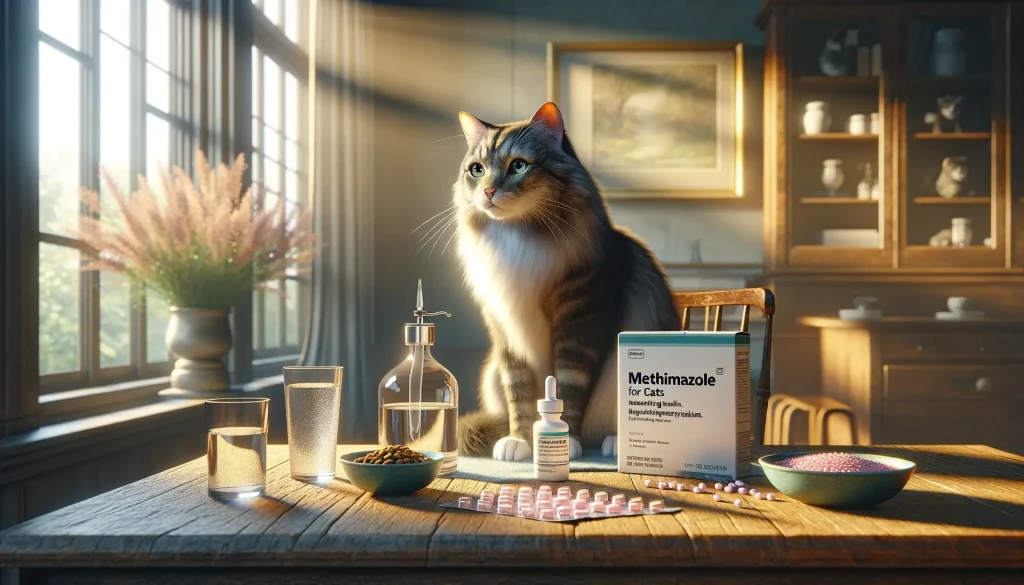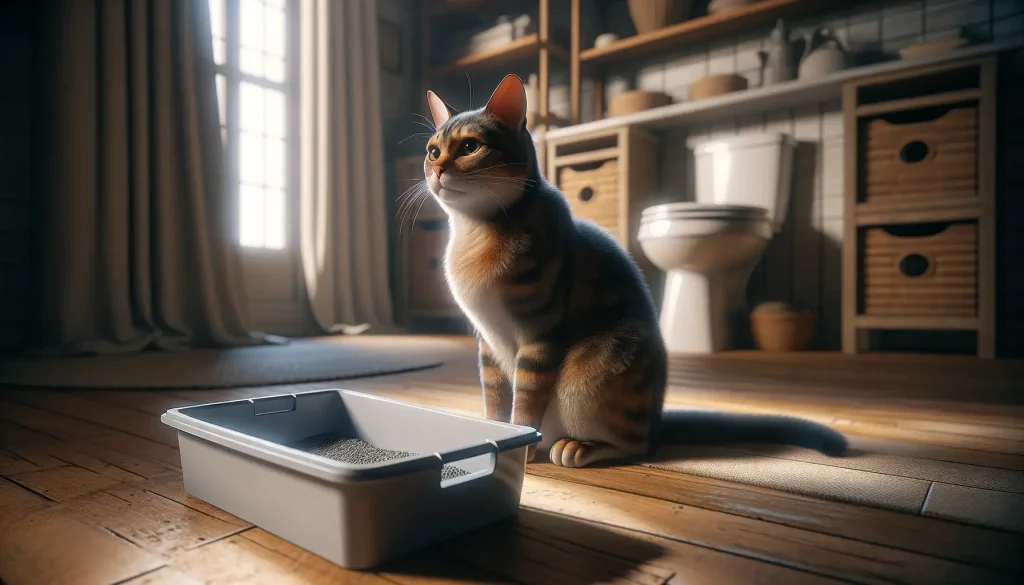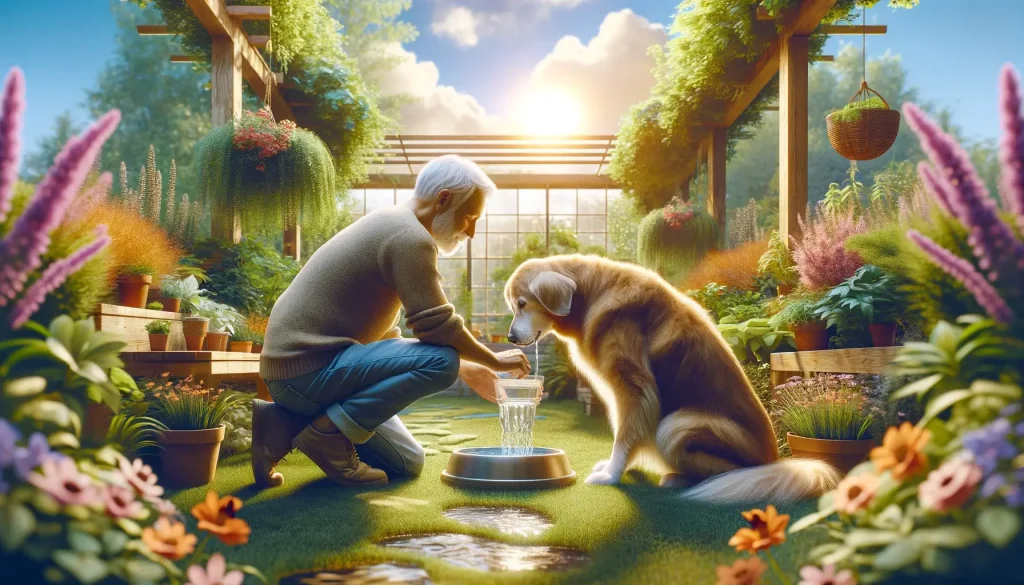
Why Is Your Older Dog Drinking More Water?
Seeing your older dog drink more water than usual can set off alarm bells for many pet owners. This phenomenon, known scientifically as polydipsia, often signals underlying health issues that shouldn’t be ignored. From the discomfort of a Urinary Tract Infection (UTI) to more severe conditions like kidney disease or diabetes, the reasons behind this increased thirst can vary widely. It’s important to not only recognize these symptoms but understand what they could mean for the health and wellbeing of your furry friend.
The reasons for an older dog drinking more water can range from the relatively benign, such as dehydration due to hot weather, to serious health concerns that require immediate attention. Conditions like kidney disease, diabetes mellitus, and Cushing’s disease are just a few examples of health issues that can lead to increased thirst in dogs. Awareness and quick response can make a significant impact on your pet’s health outcome.
But what does it really mean when your older dog starts drinking more water, and how can you identify when it’s time to see the vet? Let’s dive into the details and find out.
Causes for Increased Thirst in Older Dogs
Noticing your older dog consuming more water lately? It’s not just a quirky new habit. This condition, known as polydipsia, could be a red flag for various health issues. Understanding the reasons behind this change is crucial in providing the right care for your pet.
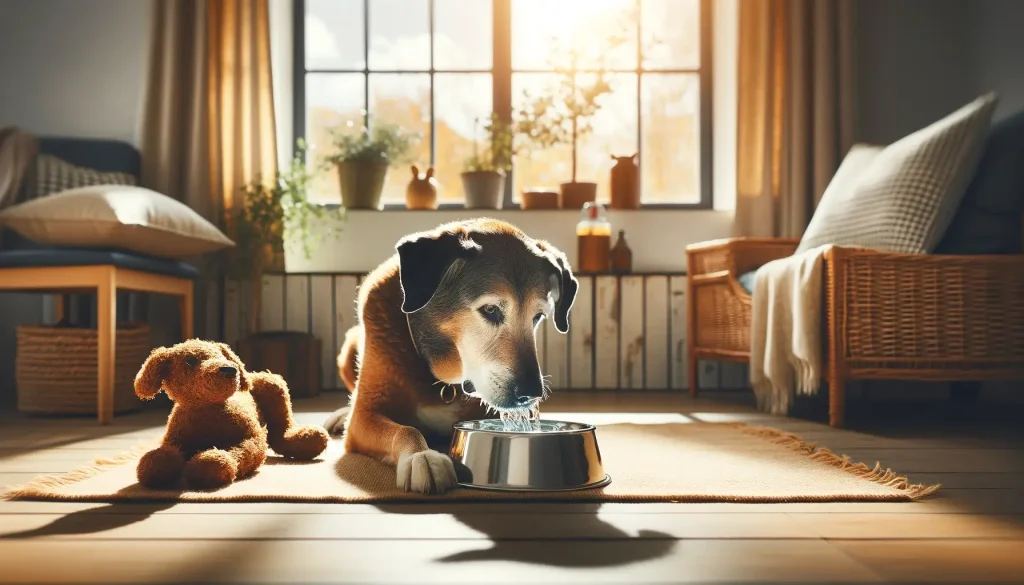
One potential cause for an older dog drinking more water is dehydration. Hot climates, more physical activity, or health issues like vomiting or diarrhea can lead to dehydration, prompting your dog to drink more to compensate.
Urinary Tract Infections (UTIs) are another concern. They make urination painful and more frequent, leading dogs to drink excessively. Look out for symptoms such as straining during urination, bloody urine, or an unusual urine odor.
More severe conditions like kidney disease can also cause increased thirst. This disease impairs the dog’s ability to filter waste, necessitating more water intake. Symptoms to watch for include vomiting, diarrhea, lethargy, and loss of appetite.
Diabetes Mellitus is another serious condition leading to excessive water consumption. Dogs with diabetes may show increased thirst and urination, weight loss, and possibly a bigger appetite.
Dogs suffering from Cushing’s Disease will also exhibit increased thirst among other symptoms like a pot-bellied appearance, increased appetite, lethargy, and changes in their fur.
Liver Disease may also prompt more water intake. Look for jaundice, vomiting, diarrhea, and lethargy as potential signs of liver issues.
Identifying the root cause of increased thirst in older dogs requires a vet’s examination, often involving blood tests, urine analysis, and possibly advanced imaging. The treatments can vary widely, from simple dietary adjustments to medication or even surgery. Tracking your dog’s water intake and seeking veterinary advice for noticeable increases in thirst is key to tackling potential health problems early on.
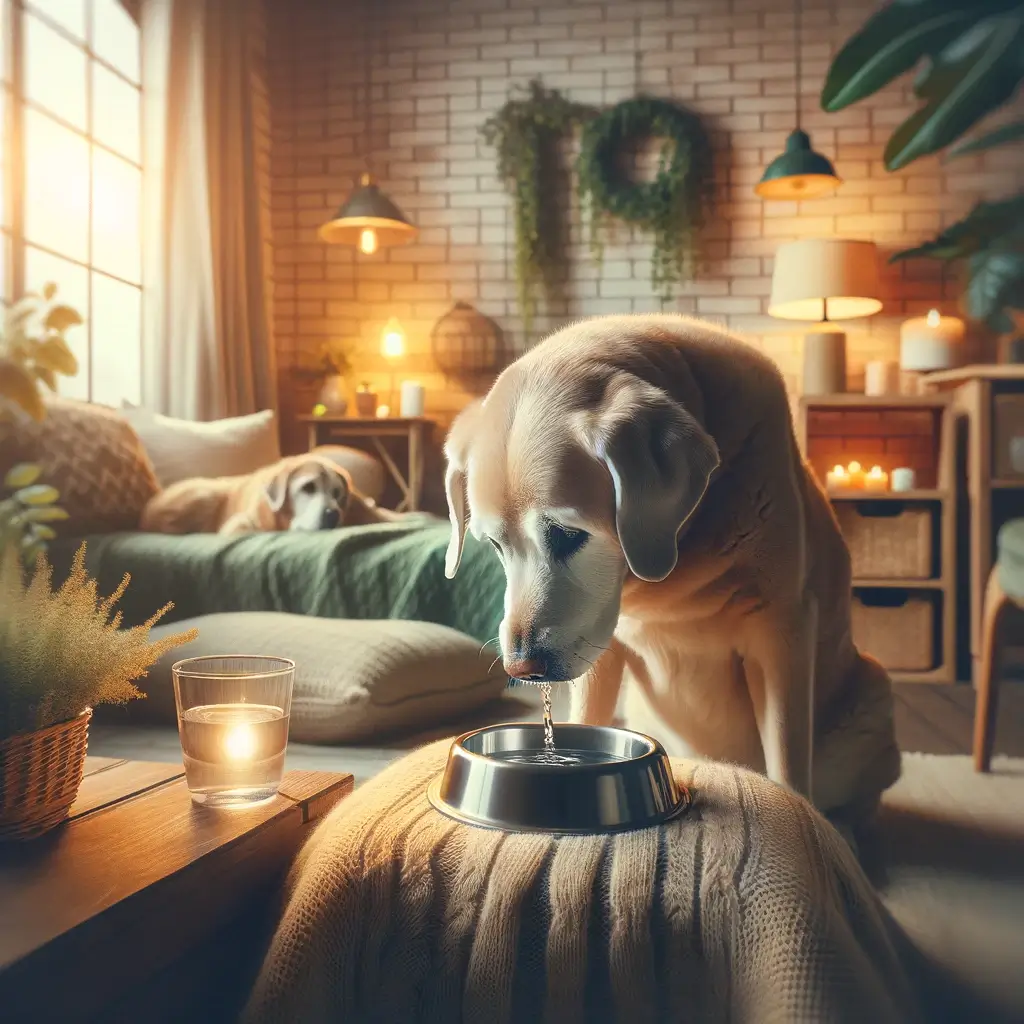
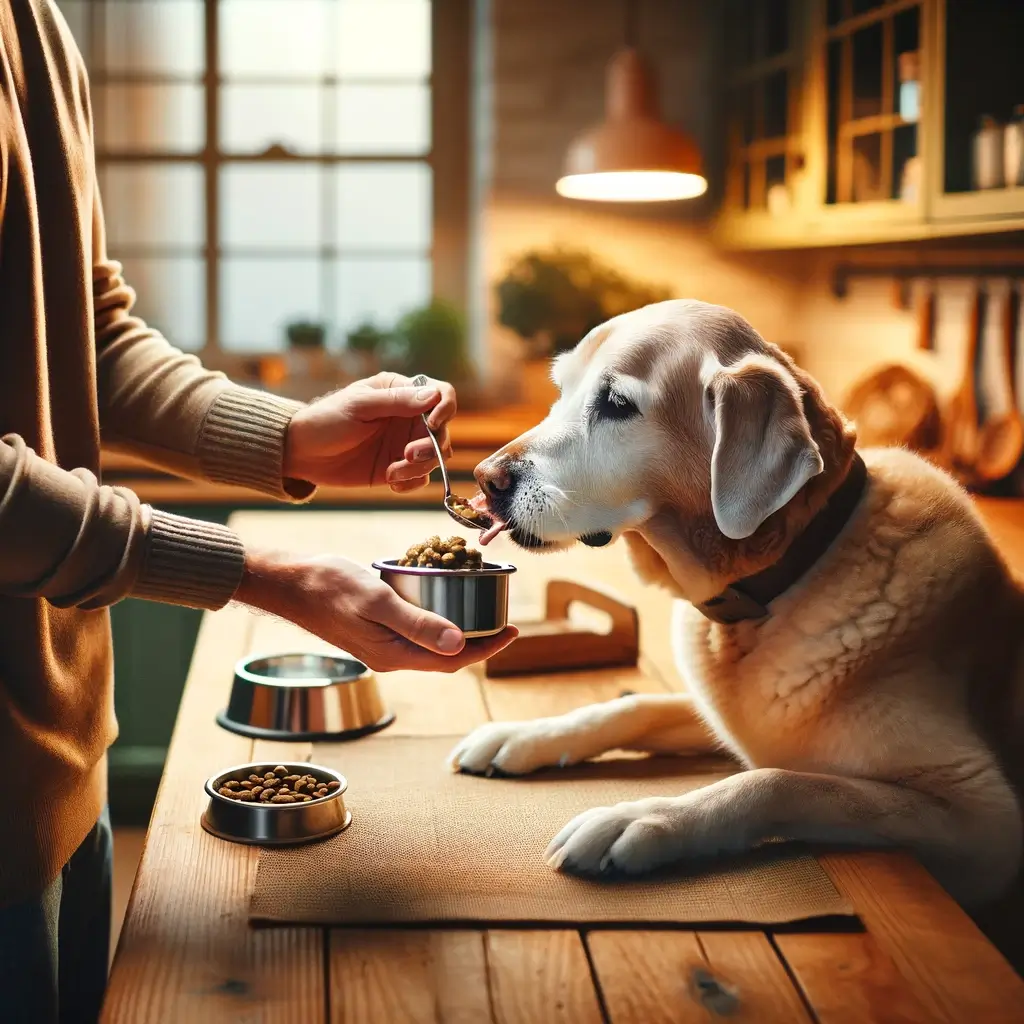
At-Home Care for Your Thirsty Senior Dog
When your older dog drinks more water, it could be a sign of health issues. But there are things you can do at home. Here’s how:
- Monitor water intake. Keep an eye on how much your older dog is drinking. Note any sudden increases.
- Watch for other symptoms, like changes in appetite or urination, that could indicate a health problem.
- Provide fresh, cool water. Always have clean water available. Change it regularly to encourage drinking.
- Maintain a comfortable environment. Ensure your dog stays cool in hot weather to prevent dehydration.
- Offer wet food. It can help increase fluid intake, especially if your dog doesn’t drink enough water.
- Limit salty snacks. High sodium can increase thirst. Choose low-sodium options for treats.
- Exercise caution. While staying active is important, avoid excessive exercise that might lead to dehydration.
These steps can help you care for a thirsty older dog at home. But, remember, if your dog continues to drink more water than usual, it’s crucial to consult a vet. They can diagnose the cause and recommend the best treatment plan. Early detection and management are key to ensuring the health and comfort of your furry friend.
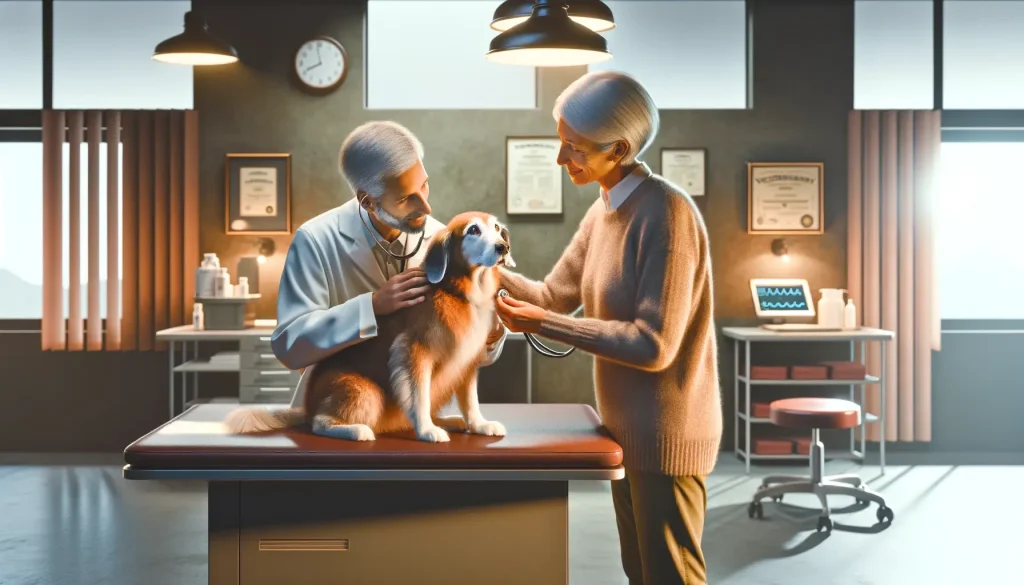
When Should Your Older Dog See the Vet?
Noticing your older dog drinking more water than usual calls for a closer look at their health. While it’s necessary to monitor and manage their water intake at home, understanding when it’s time to seek veterinary help is crucial.
Increased thirst, or polydipsia, often signals health conditions that need professional attention. Here’s when it becomes essential to visit the vet:
- If the increased water consumption persists for more than a day or two without any apparent reason such as hot weather or increased exercise.
- When other symptoms accompany the increased thirst, such as weight loss, changes in urination patterns, vomiting, diarrhea, lethargy, or appetite changes.
- If you’ve tried managing water intake and environment but see no improvement in your dog’s condition.
A visit to the vet should not be delayed if you suspect underlying issues. Vets can conduct tests like blood tests and urine analysis to pinpoint the exact cause, whether it’s kidney disease, diabetes mellitus, Cushing’s disease, or UTIs. Early detection and treatment of these conditions can significantly improve the quality of life for your older dog.

Hydration Tips for Senior Dogs
Ensuring your older dog stays adequately hydrated is key to maintaining their health, especially when they are drinking more water than usual. While increased thirst can be a sign of underlying health issues, proper hydration is crucial for supporting their overall wellbeing. Here are essential tips for keeping your senior dog well-hydrated:
Offer multiple water stations around your home to encourage your dog to drink regularly. This is particularly helpful for older dogs that may not move as much or may have vision problems.
Consider using water fountains designed for pets. These fountains keep water circulating, making it more appealing and fresher for your dog to drink. The sound of flowing water can also stimulate your dog’s interest in drinking more.
Evaluate the type of water bowl you’re using. Older dogs may find it easier to drink from shallow bowls or ones that are at an elevated level to avoid bending down too much.
Monitor the quality of water you provide. Ensure it’s clean and fresh by changing it at least twice a day. Using filtered water can also be beneficial, especially in areas with hard water, to prevent any potential health issues from minerals.
Incorporate foods with high moisture content into your dog’s diet. Canned dog food or adding a bit of water to dry kibble can significantly increase their fluid intake.
Avoid overexerting your senior dog, especially in hot weather, to prevent dehydration. Plan walks during cooler parts of the day and always bring water for your dog to drink.
By following these hydration tips, you can help manage your senior dog’s increased water intake and contribute to their overall health. Always remember, if your dog’s thirst seems excessive or is accompanied by other symptoms, consulting your veterinarian is crucial to address any potential health issues promptly.
Beginner Guide to Raising Quail at Home
What are the Signs of a Dog Concussion?
What Causes Your Dog’s Ears to Smell Bad?
When your dog’s ears start to emit an unpleasant odor, it might leave you puzzled…
Methimazole Treatment for Cat Hyperthyroidism
Methimazole plays a crucial role in managing feline hyperthyroidism, a condition marked by an overactive…
Got Hummingbirds in your Backyard? Here’s How to Care for Them.
Why Does Your Cat Pee Outside the Litter Box?
Cat’s Litter Box Issues It’s not uncommon for cat owners to face the frustrating dilemma…



